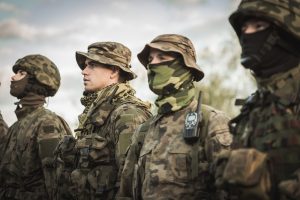
Thinking about joining the Army, are you? You’re probably wondering just how long is Army basic training. It’s the first question on everyone’s mind because it’s the first real hurdle you’ll face on your journey to becoming a soldier. Knowing the timeline helps you prepare mentally and physically for the challenge of Army boot camp.
The Straight Answer: 10 Weeks of Transformation
Let’s get right to it; the simple answer is ten weeks. The U.S. Army’s Basic Combat Training (BCT) is a ten-week course at posts like Fort Jackson or Fort Sill. In just over two months, you will be physically and mentally transformed from a civilian into a soldier ready for the rigors of Army life.
It’s an intense period structured to break you down and rebuild you with the skills, discipline, and values of the U.S. Army. The focus on basic training fitness is immediate and relentless. This transformation is the core purpose of the ten weeks.
But Is It Really Just 10 Weeks?
Here’s something you need to know. While the training itself is ten weeks, you’ll be away from home for a bit longer. There are a few other parts to the process that add to your total time commitment before you even start week one.
Think of the ten weeks as the main event, but there are other critical steps you must complete. Understanding the full picture of your initial military training is important. This helps you and your family set the right expectations.
Reception Battalion: The Unofficial “Yellow Phase”
Before week one of BCT even starts, you’ll report to the Reception Battalion. This period is what many call the “Yellow Phase” or “Week Zero,” and it can last anywhere from a few days to over a week. During these yellow phase weeks, you are not doing the intense field training you might imagine.
Instead, this time is all about processing and administration. You’ll get your gear issued, receive military-style haircuts, and complete a mountain of paperwork. You will also go through a series of medical and dental screenings to confirm you are ready for the training ahead.
This is also where the Army confirms your eligibility, whether you are a U.S. citizen or a permanent resident with a valid green card. For recruits straight out of high school, this is a sudden immersion into a world of structured processes. It’s a lot of waiting and following instructions, but it is a necessary first step on your Army journey.
What Comes After BCT? Advanced Individual Training (AIT)
After you graduate from Basic Combat Training, your training is not over. You then move on to Advanced Individual Training, or AIT. This is where you learn the specific soldier skills for your Military Occupational Specialty (MOS), which is your official Army job.
The length of AIT varies a lot depending on the job you’ve chosen. The training for a culinary specialist will be much shorter than that of an intelligence analyst or a combat medic. Some AIT courses are only a few weeks long, while others can last for more than a year, making the total training time much longer than just the initial ten weeks.
This phase-based approach to military training is common across the services, though the specifics for the Air Force or Marine Corps will differ. After you complete basic training, you are sent to a specialized school to become an expert in your field. This is a critical distinction between initial entry training and job-specific education.
A Week-by-Week Breakdown of Basic Training
To truly understand the ten weeks, you need to look at what happens inside them. The Army breaks BCT into three distinct phases: Red, White, and Blue. Each phase, or group of phase weeks, has a specific purpose in your development from a civilian into a professional soldier.
Phase I (Red Phase): Weeks 1-3 – The Foundation of Discipline
The first phase is the iconic Red Phase, which covers the first three weeks. This is the “total control” phase where Drill Sergeants work to break your civilian habits and build a foundation of military discipline. You’ll start learning the fundamental customs and courtesies of the Army, from how to march to how to properly address your superiors.
Physical training, or PT, starts immediately and will push you harder than you’ve likely ever been pushed. This is where you learn discipline through repetition and attention to detail. Everything from how you eat in the dining facility to how you organize your locker is inspected constantly, leaving very little personal time.
During the red phase weeks, you are introduced to the seven core Army Values, including selfless service and personal courage. These values are the bedrock of a soldier’s identity. The main goal is to instill discipline and build the mental toughness required for everything that follows.
Phase II (White Phase): Weeks 4-5 – Building a Soldier
Next is the White Phase, which marks a shift in focus from basic discipline to core combat skills. This is when you’ll be introduced to your primary weapon, the M4 carbine. You’ll spend countless hours on Basic Rifle Marksmanship (BRM), learning to handle, disassemble, clean, and accurately fire your weapon.
The white phase weeks end with a critical basic rifle qualification test you must pass to continue. This is also when you’ll face the confidence and obstacle courses. These challenges are built to test your courage, physical abilities, and ability to work with others while navigating obstacle courses.
Teamwork becomes a major focus as you start working more closely with the other recruits in your platoon in small team exercises. Your Drill Sergeants will start to treat you less like a raw civilian and more like a soldier in training. Your training fitness will be tested daily.
Phase III (Blue Phase): Weeks 6-9 – Honing Your Skills
The final training phase is the Blue Phase, covering weeks six through nine. This is where all your previous training comes together. You’ll learn more advanced soldier tasks like navigating with a map and compass, using hand grenades, and operating other weapons like machine guns.
The highlight of the blue phase weeks is the multi-day Field Training Exercise (FTX). During this extensive field exercise, you’ll live in the field and run missions that simulate realistic combat scenarios. This training exercise, often an exercise called “The Forge,” is your chance to apply everything you’ve learned in a stressful environment.
By the end of this phase, you are no longer just a recruit. You have the skills, confidence, and discipline of a trained soldier, ready for the final test before graduation. That test is often a long ruck march back to the barracks, symbolizing the end of your transformation.
Week 10: Graduation and Family Day
Week ten is the payoff for all your hard work and perseverance. It usually involves a Family Day, where your loved ones can visit you on post and witness your transformation firsthand. This week culminates in the graduation ceremony, a moment of immense pride.
You will officially earn the title of U.S. Army Soldier and don the coveted Army black beret for the first time. It is a moment you will remember for the rest of your life. With your BCT skills complete, you join the ranks of enlisted soldiers ready for the next stage of your career.
How Long Is Army Basic Training For Different Roles?
As we touched on, your MOS is a big deal and determines what your training pipeline looks like after BCT. If you’re going into a combat role like Infantry, you’ll likely attend One Station Unit Training (OSUT). But if your job is in a technical field, your path is different.
You will complete basic training at one location and then move to another for your AIT. Below is a general idea of how long AIT schools are for different types of jobs. This helps show how much the total training differs.
| MOS Field | Example Jobs | General AIT Length |
|---|---|---|
| Combat Arms | Infantry, Armor, Combat Engineer | Part of OSUT (14-22 weeks total) |
| Logistics & Support | Supply Specialist, Cook, Mechanic | 7-12 weeks |
| Intelligence & Communications | Intel Analyst, Signal Support | 12-28 weeks |
| Medical | Combat Medic, Lab Technician | 16-52+ weeks |
| Aviation | Helicopter Repairer, UAV Operator | 15-35 weeks |
As you can see, the time commitment varies wildly. A future medic could spend another year in school after BCT. Your recruiter from the U.S. Army should explain this in detail so you understand the full scope of your initial training.
Factors That Can Change the Timeline
Can the ten weeks become longer? Yes, it absolutely can. There are two main reasons a recruit might be delayed during basic combat training. The first is failing to meet a critical standard.
If you can’t pass the Army Physical Fitness Test or you fail your basic rifle marksmanship qualification, you may be “recycled.” This means you are sent back to an earlier point in the training cycle to try again with a different platoon. It is a setback, but it provides another chance to succeed.
The second common reason for a delay is injury. BCT is physically demanding, and injuries do happen despite safety precautions. If you get hurt, you might be moved to a medical hold platoon to recover, and once cleared, you’ll be put back into the training cycle where you left off.
What About One Station Unit Training (OSUT)?
Some MOSs, particularly in combat arms, use a model called One Station Unit Training, or OSUT. If you sign up for one of these jobs, your BCT and AIT are combined into one continuous training boot camp at a single location. You will stay with the same platoon and the same Drill Sergeants for the entire duration.
Popular jobs like Infantry (11B), Cavalry Scout (19D), and Combat Engineer (12B) use the OSUT model. For these roles, the training lasts from 14 to 22 weeks. So, for an infantryman, the answer to how long is Army basic training is effectively 22 weeks, because it is all one block of instruction.
This integrated model helps build very strong unit cohesion. You and the soldiers you train with form an incredibly tight bond before reaching your first active-duty unit. This structure for training soldiers ensures they not only learn army values but also the specific skills for their job in a cohesive environment.
Conclusion
The simple answer to how long is Army basic training is 10 weeks. But as you now know, your total initial journey into the Army will almost certainly be longer. You must account for your time at the Reception Battalion, also called the Yellow Phase, before training even begins.
After your 10-week boot camp, your AIT or OSUT school awaits, where you will learn your specific job. This entire pipeline, from the moment you step off the bus to the day you graduate AIT, is designed to create the most capable soldiers in the world. Training typically lasts several months in total.
It’s a challenge that will test you, change you, and ultimately reward you with a deep sense of accomplishment and pride. You will complete basic training with the skills and confidence to succeed in your Army career. The journey starts with that first ten-week transformation.
